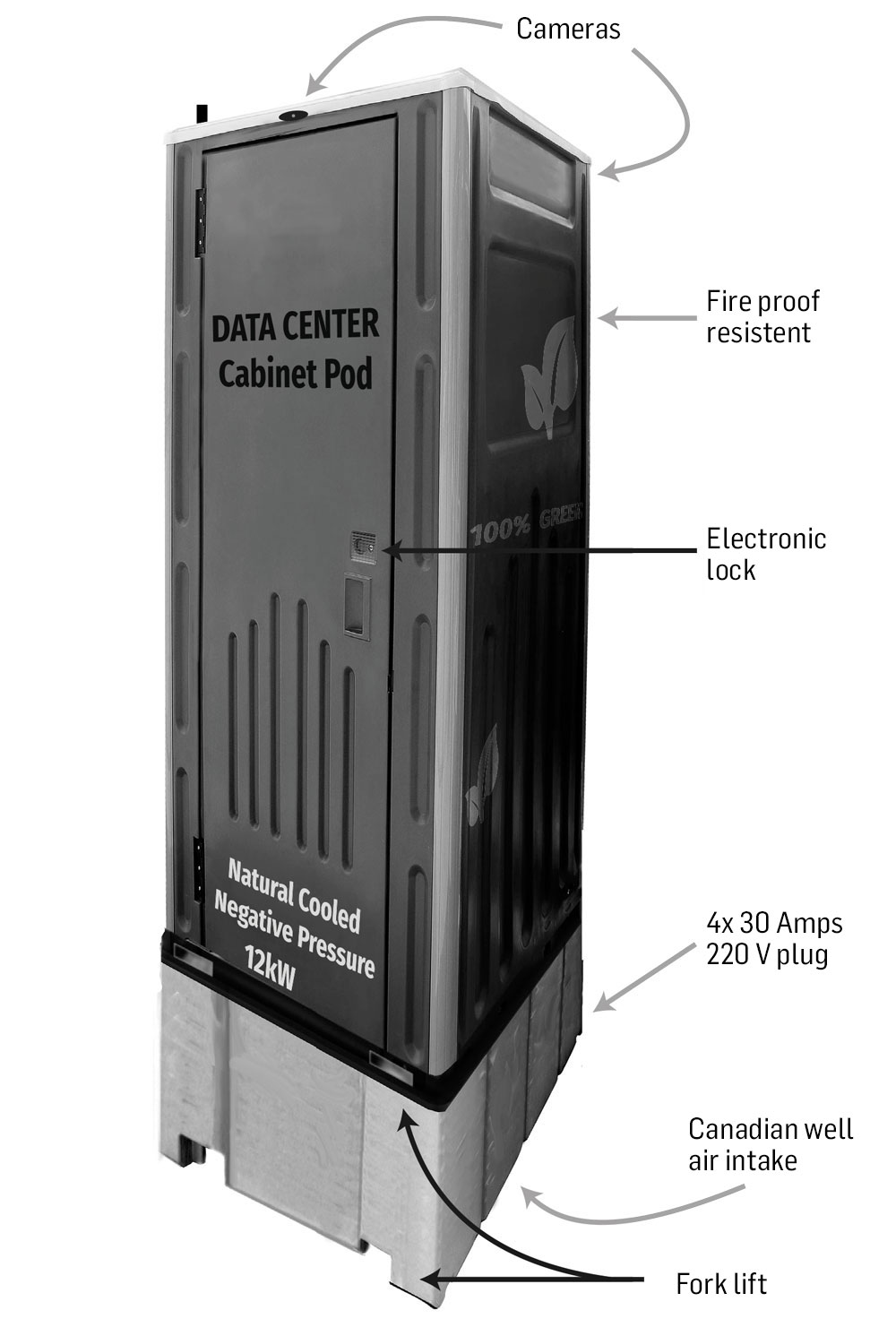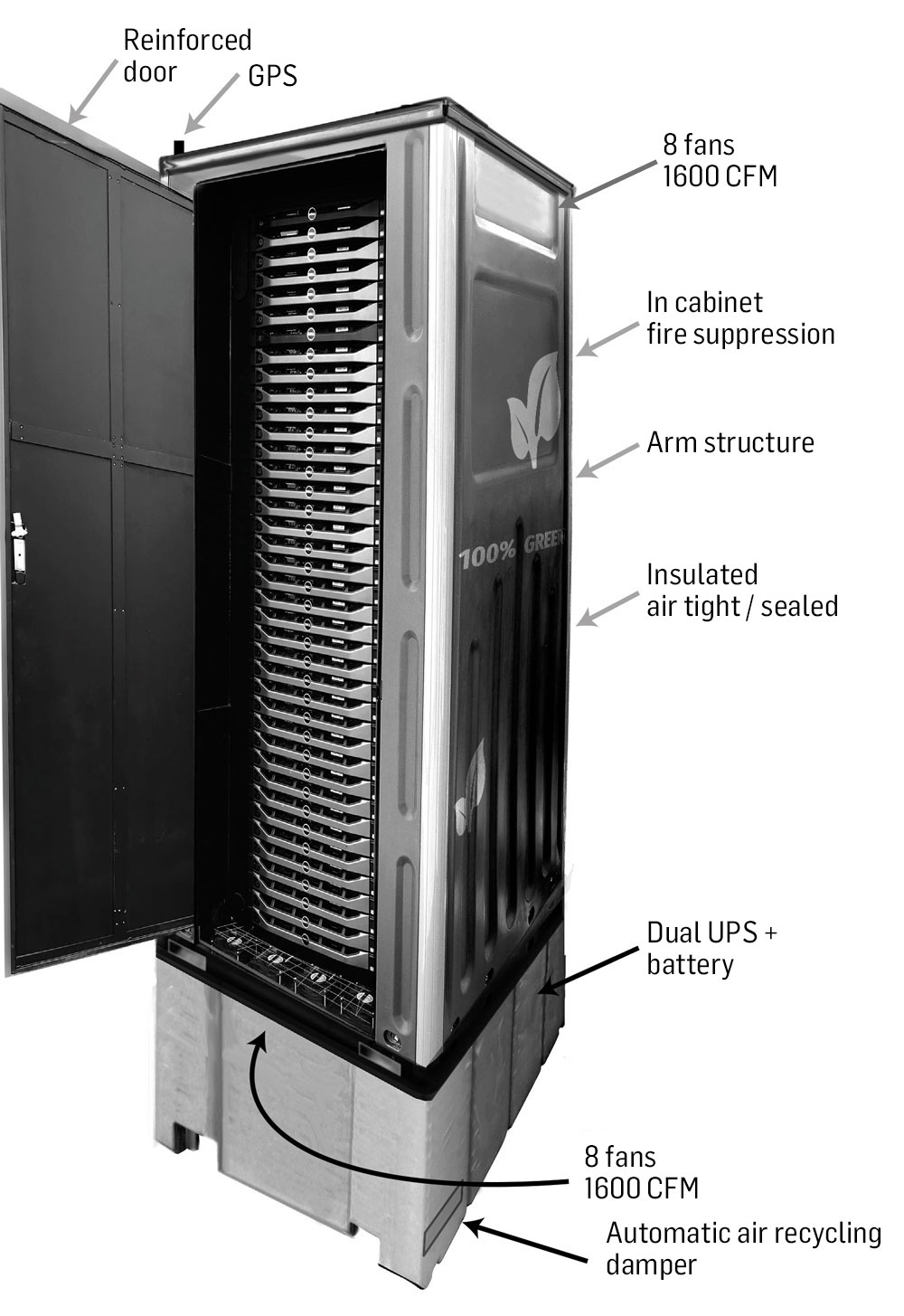The AgroDomeTM Campus 2:
Beauharnois, Quebec
In development
CAPACITY
GENERATION
EFFECTIVENESS
LEVEL
TOMATO
CAPACITY
GENERATION
EFFECTIVENESS
LEVEL
TOMATO
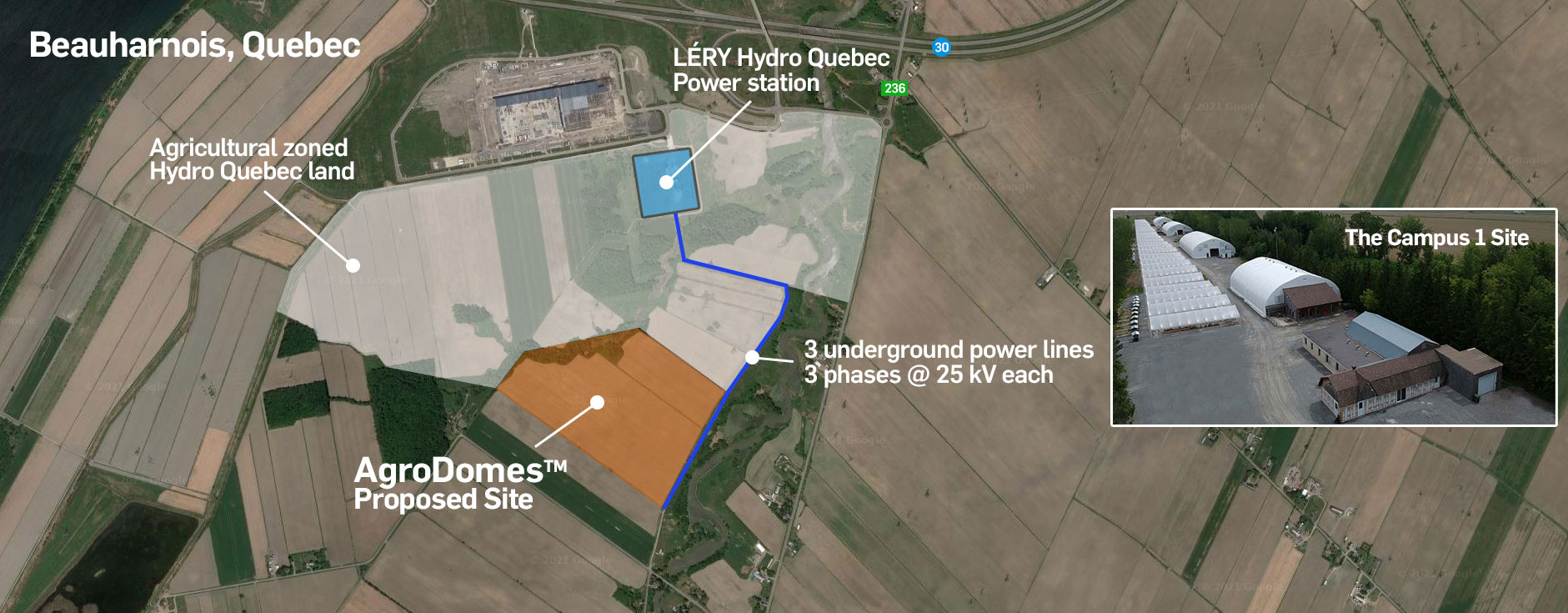
SIZE
IFICATION
HEAT-EXCHANGER
HEAT-EXCHANGER
GREENHOUSES
SIZE
INTAKE
DEHUMIDIFICATION
HEAT-EXCHANGER
PRESSURE GREENHOUSES
HEAT-EXCHANGER
AgroDomes is currently developing its Campus 2, a 770,000 square foot (approximately 7 hectares) positive pressure organic greenhouse complex adjacent to the Hydro-Québec Léry substation in Beauharnois, Québec which will consist of ten 77,000 square foot greenhouses which will receive heated dry air generated from adjacent data centers.
The dry nature of the supplied air will be used 12 months of the year to maintain an environment in the greenhouses which minimizes or eliminates mold, mildew and presence of insects. This creates ideal conditions for low cost production of organic produce by reducing the need for chemicals to combat each of these negative greenhouse conditions.
The project will provide significant economic benefit to the region through direct employment of construction and ongoing operations as well as providing significant secondary employment through services that will be needed to support ongoing operations.
The project will also support provincial goals of sustainable development and minimizing carbon footprint by providing a year-round source of organic produce to the Montreal and surrounding areas thereby reducing the need to source produce from more distant locations – even in the winter months.
Each data center will be approximately 23,000 square feet and will provide 4 megawatts of power for computer servers. These servers will be housed in patent pending negative pressure cabinets, each with a capacity of 6,000 watts. Cool air for the servers is provided through a proprietary system of “Canadian wells” thereby eliminating the need for air conditioning or major electro mechanical venting.
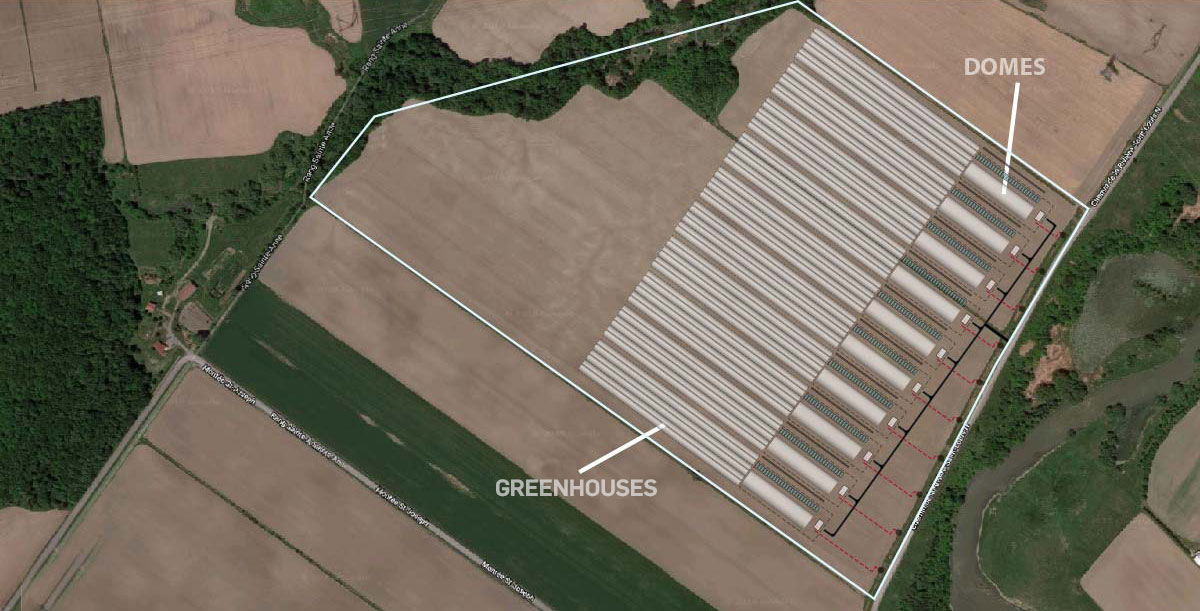
Heat for agricultural applications such as greenhouses and drying of grains and hay represents a major cost component to their operations. This is particularly relevant in northern locations where the cooler climate necessitates heating for the majority of the year.
Greenhouse heat that is generated from non-renewable fossil fuels or from renewable biomass sources, contribute significantly to atmospheric carbon and climate change. Even when such heat is provided from electricity sourced from greener hydro facilities, there is a significant waste of energy because the heat is typically generated for a single purpose and used only once before being vented into the atmosphere.
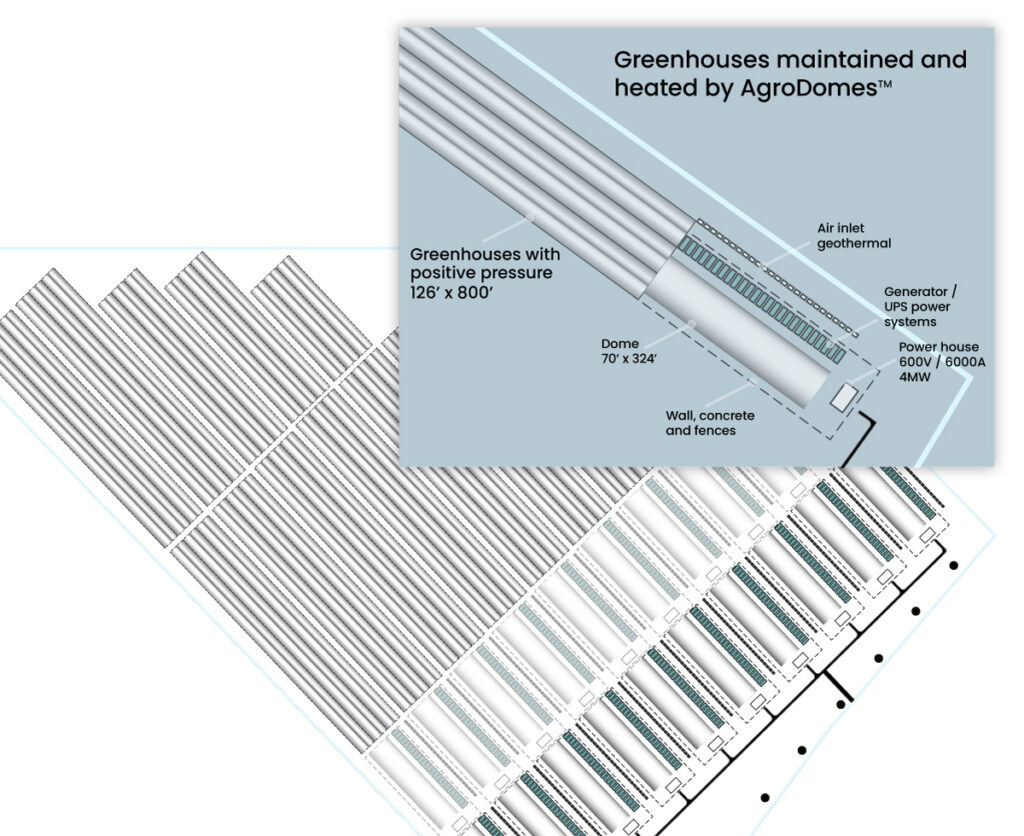
Data center operations are also very energy intensive and draw power for air conditioning to provide cool air for computer servers and power to run the servers themselves. Traditional data centers are also fairly inefficient and wasteful due to the need to power air conditioning units, only to have the cool air heated up by the servers and again, expelled in to the atmosphere.
Both greenhouses and data centers are energy intensive and as such their profitability is highly dependent on the underlying cost of power. Since data centers generate heat as a waste product through normal operations and greenhouses need heat to operate, it is highly logical to integrate these operations into one symbiotic operation which minimizes the use of power, minimizes costs of operations and ultimately minimizes the impact to the environment which affects climate change.
Combined with AgroDomes integration of a Canadian well system in its data centers which eliminates the need for energy-intensive air cooling to feed the servers, the result is the unique concept of a synergistic “Heat Campus” which utilizes servers as individual heat sources to feed positive pressure greenhouses and where heat can be used efficiently through a cascade of applications.
99% Clean Hydro Electricity Energy
Lowest electricity cost in North America
Negative Pressure Cabinet Servers
